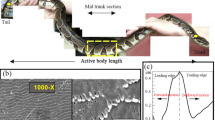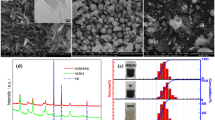Abstract
Hydrostatic/hybrid bearings have been used in many engineering applications. In order to address the disadvantages of lubricating oil such as pollution and resource consumption, researchers are trying to use water to replace oil in these bearings. To eliminate the corrosivity of water and increase its viscosity, additives were added in water and this new lubricant is called “green water-based lubricant”. Ceramics are considered to be very suitable tribo-pair materials in water. In order to select the best material in the green water-based lubricant and explore the effect of the additives, this paper carried out friction and wear experiments of self-mated SiC and self-mated Si3N4 in this new lubricant on a ring-toring tribometer. The results show that self-mated SiC possesses better running-in property, higher load-carrying capacity, lower friction coefficient, lower wear rate and smoother surface topography. The results show that the self-mated SiC and green water-based lubricant is a promising combination to replace the metal/oil system in hydrostatic/hybrid bearings.
Similar content being viewed by others
Abbreviations
- ΔV :
-
worn volume of the upper ring
- Δm :
-
mass loss of the upper ring
- ρ :
-
density of the specimen
- q :
-
wear rate of the upper ring
- v :
-
sliding velocity
- t :
-
test time
- P :
-
test load
References
Garg, H. C., Sharda, H. B., and Kumar, V., “On the design and development of hybrid journal bearings: a review,” Tribotest, Vol. 12, No. 1, pp. 1–19, 2006.
Bartz, W. J., “Lubricants and the environment,” Tribology International, Vol. 31, No. 1–3, pp. 35–47, 1998.
Andersson, P. and Lintula, P., “Load-carrying capability of water-lubricated ceramic journal bearings,” Tribology International, Vol. 27, No. 5, pp. 315–321, 1994.
Liu, F., Lin, B., and Zhang, X. F., “Numerical design method for water-lubricated hybrid sliding bearings,” Int. J. Precis. Eng. Manuf., Vol. 9, No. 1, pp. 47–50, 2008.
Corbett, J., Almond, R. J., Stephenson, D. J., and Kwan, Y. B. P., “Porous Ceramic Water Hydrostatic Bearings for Improved for Accuracy Performance,” CIRP Annals — Manufacturing Technology, Vol. 47, No. 1, pp. 467–470, 1998.
Andersson, P., “Water-Lubricated and Dry-Running Properties of Ceramic Journal Bearings,” Tribotest, Vol. 10, No. 2, pp. 147–161, 2003.
Tomizawa, H. and Fischer, T. E., “Friction and Wear of Silicon Nitride and Silicon Carbide in Water: Hydrodynamic Lubrication at Low Sliding Speed Obtained by Tribochemical Wear,” A S L E Transactions, Vol. 30, No. 1, pp. 41–46, 1987.
Amutha Rani, D., Yoshizawa, Y., Hyuga, H., Hirao, K., and Yamauchi, Y., “Tribological behavior of ceramic materials (Si3N4, SiC and Al2O3) in aqueous medium,” Journal of the European Ceramic Society, Vol. 24, No. 10–11, pp. 3279–3284, 2004.
Heshmat, H. and Jahanmir, S., “Tribological Behavior of Ceramics at High Sliding Speeds in Steam,” Tribology Letters, Vol. 17, No. 3, pp. 359–366, 2004.
Jordi, L., Iliev, C., and Fischer, T. E., “Lubrication of Silicon Nitride and Silicon Carbide by Water: Running in, Wear and Operation of Sliding Bearings,” Tribology Letters, Vol. 17, No. 3, pp. 367–376, 2004.
Wang, X., Kato, K., and Adachi, K., “The Critical Condition for the Transition from HL to ML in Water-Lubricated SiC,” Tribology Letters, Vol. 16, No. 4, pp. 253–258, 2004.
Liu, F., Lin, B., and Zhang, X., “Friction and Wear Properties of Si3N4 and SiC Used for Water-Lubricated Sliding Bearings,” Advanced Science Letters, Vol. 4, No. 3, pp. 715–719, 2011.
Wong, H., Kato, K., and Umehara, N., “Water lubrication of ceramics,” Eurotrib., Vol. 93, No. 3, pp. 149–154, 1993.
Andersson, P., “Water-lubricated pin-on-disc tests with ceramics,” Wear, Vol. 154, No. 1, pp. 37–47, 1992.
Chen, M., Kato, K., and Adachi, K., “Friction and wear of self-mated SiC and Si3N4 sliding in water,” Wear, Vol. 250, No. 1–12, pp. 246–255, 2001.
Chen, M., Kato, K., and Adachi, K., “The comparisons of sliding speed and normal load effect on friction coefficients of self-mated Si3N4 and SiC under water lubrication,” Tribology International, Vol. 35, No. 3, pp. 129–135, 2002.
Wong, H. C., Umehara, N., and Kato, K., “Frictional characteristics of ceramics under water-lubricated conditions,” Tribology Letters, Vol. 5, No. 4, pp. 303–308, 1998.
Chen, M., Kato, K., and Adachi, K., “The Difference in Running-In Period and Friction Coefficient Between Self-Mated Si3N4 and SiC Under Water Lubrication,” Tribology Letters, Vol. 11, No. 1, pp. 23–28, 2001.
Jahanmir, S., Ozmen, Y., and Ives, L. K., “Water Lubrication of Silicon Nitride in Sliding,” Tribology Letters, Vol. 17, No. 3, pp. 409–417, 2004.
Xu, J., Kato, K., and Hirayama, T., “The transition of wear mode during the running-in process of silicon nitride sliding in water,” Wear, Vol. 205, No. 1–2, pp. 55–63, 1997.
Gates, R. S. and Hsu, S. M., “Tribochemistry Between Water and Si3N4 and SiC: Induction Time Analysis,” Tribology Letters, Vol. 17, No. 3, pp. 399–407, 2004.
Lee, C.-G., Hwang, Y.-J., Choi, Y.-M., Lee, J.-K., Choi, C., and Oh, J.-M., “A study on the tribological characteristics of graphite nano lubricants,” Int. J. Precis. Eng. Manuf., Vol. 10, No. 1, pp. 85–90, 2009.
Ma, Z.-Z., Zhang, C.-H., Luo, J.-B., Lu, X.-C., and Wen, S.-Z., “Superlubricity of a Mixed Aqueous Solution,” Chinese Physics Letters, Vol. 28, No. 5, Paper No. 056201, 2011.
Li, J., Zhang, C., and Luo, J., “Superlubricity Behavior with Phosphoric Acid-Water Network Induced by Rubbing,” Langmuir, Vol. 27, No. 15, pp. 9413–9417, 2011.
Nalam, P., Clasohm, J., Mashaghi, A., and Spencer, N., “Macrotribological Studies of Poly (L-lysine)-graft-Poly (ethylene glycol) in Aqueous Glycerol Mixtures,” Tribology Letters, Vol. 37, No. 3, pp. 541–552, 2010.
Hartung, W., Rossi, A., Lee, S., and Spencer, N., “Aqueous Lubrication of SiC and Si 3 N 4 Ceramics Aided by a Brushlike Copolymer Additive, Poly (l-lysine)-graft-poly (ethylene glycol),” Tribology Letters, Vol. 34, No. 3, pp. 201–210, 2009.
Wang, X., Kato, K., Adachi, K., and Aizawa, K., “Loads carrying capacity map for the surface texture design of SiC thrust bearing sliding in water,” Tribology International, Vol. 36, No. 3, pp. 189–197, 2003.
Byun, J., Shin, H., Kwon, M., Kim, B., and Chu, C., “Surface texturing by micro ECM for friction reduction,” Int. J. Precis. Eng. Manuf., Vol. 11, No. 5, pp. 747–753, 2010.
Liu, F., Lin, B., and Wang, Z. B., “Design on Hybrid Ceramic Bearing Based on Water Based Fluid with Controllable Viscosity,” Key Engineering Materials, Vol. 443, pp. 731–735, 2010.
Yan, F., Yan, S., Liu, F., and Lin, B., “An Experimental Study of Antirust Additives Ratio for Green Water-Based Lubricant,” Materials Science Forum, Vol. 697–698, pp. 88–92, 2012.
Kim, H.-J. and Kim, D.-E., “Nano-scale friction: A review,” Int. J. Precis. Eng. Manuf., Vol. 10, No. 2, pp. 141–151, 2009.
Fischer, T. E. and Mullins, W. M., “Chemical aspects of ceramic tribology,” The Journal of Physical Chemistry, Vol. 96, No. 14, pp. 5690–5701, 1992.
Hirosaki, N., Okada, A., and Matoba, K., “Sintering of Si3N4 with the Addition of Rare-Earth Oxides,” Journal of the American Ceramic Society, Vol. 71, No. 3, pp. C-144–C-147, 1988.
Author information
Authors and Affiliations
Corresponding author
Rights and permissions
About this article
Cite this article
Yan, S., Lin, B., Liu, F. et al. Friction and wear of self-mated SiC and Si3N4 in green water-based lubricant. Int. J. Precis. Eng. Manuf. 13, 1067–1072 (2012). https://doi.org/10.1007/s12541-012-0139-7
Received:
Accepted:
Published:
Issue Date:
DOI: https://doi.org/10.1007/s12541-012-0139-7




